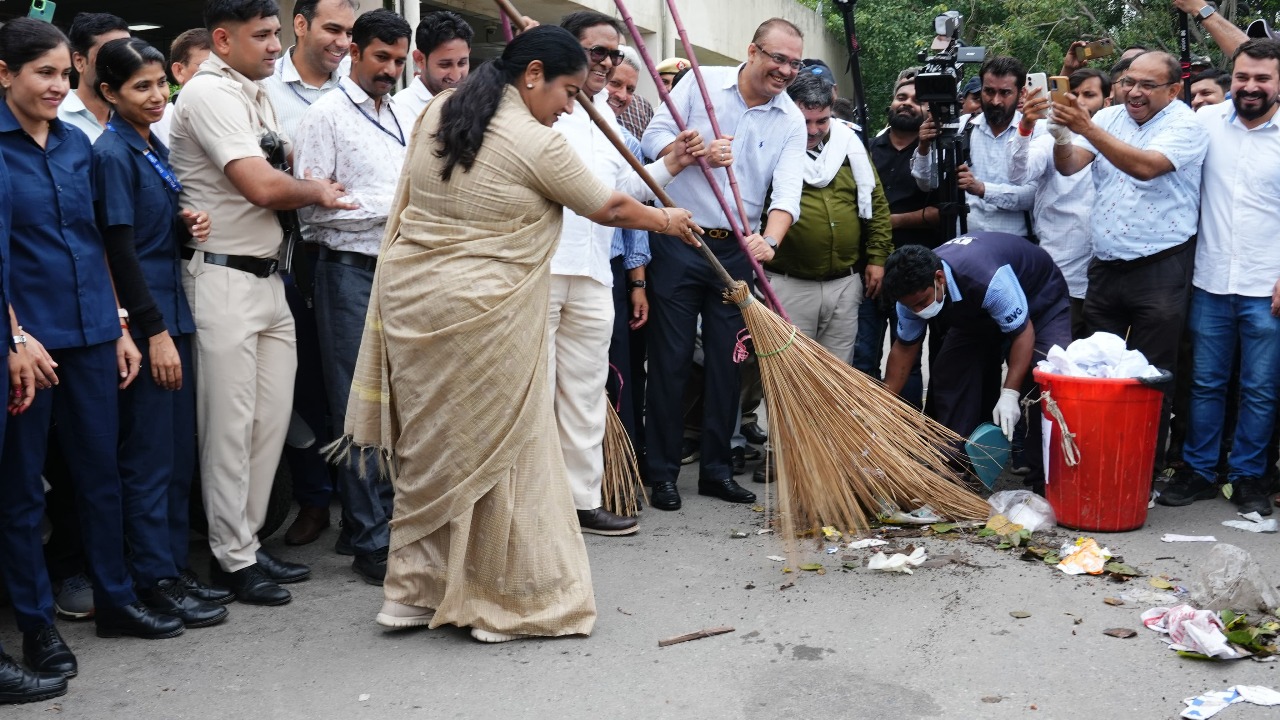Delhi Ke Koode Se Azaadi: Rekha Gupta’s Clean-Up Crusade to Redefine the Capital’s Future

Redefine the Capital’s Future
On August 1, 2025, Delhi witnessed a powerful political and social statement—Chief Minister Rekha Gupta of the BJP, broom in hand, personally led the clean-up of the Women and Child Development Department office at Kashmere Gate has started a citywide campaign called “Delhi ke Koode Se Azaadi,” which means “Freedom from Garbage.”
This wasn’t just a symbolic photo-op. It marked the beginning of a 30-day mission to clean, declutter, and beautify Delhi—an effort strategically aligned with Prime Minister Narendra Modi’s Swachh Bharat Mission.
In an age where political optics often overshadow ground realities, this campaign promises to reverse the trend. It's not just about aesthetics; it’s about accountability, civic engagement, and government departments walking the talk.
Understanding the Campaign: What Is “Delhi Ke Koode Se Azaadi”?
The campaign, running from August 1 to August 31, 2025, aims to:
take part.
the cleanest constituency

The initiative is a bottom-up approach—with departments like MCD, PWD, Delhi Police, and NDMC being made directly responsible for designated zones, and daily reviews by top officials are underway.
In CM Gupta’s own words: “No more sitting in AC offices. If we want a clean Delhi, we must lead by example.”
The Political and Social Context: A Timely Move by BJP
The backdrop is politically significant. In February 2025, the BJP dethroned AAP in the Delhi Assembly elections by bagging 48 out of 70 seats, appointing Rekha Gupta as the capital’s new CM. Her governance so far has emphasized cleanliness, discipline, and grassroots outreach—a visible extension of the central government's Swachh Bharat Mission, launched in 2014 under Narendra Modi.
The timing of this campaign—just weeks before Independence Day—is a masterstroke. It leverages patriotic sentiment and public engagement, all while addressing one of Delhi’s most chronic urban issues: waste mismanagement.
Campaign Highlights: Where Governance Meets Innovation
This isn’t just another drive. What sets this campaign apart is its multi-pronged, data-backed strategy:
Departments and officers are assigned to specific zones with live reporting mechanisms. CM Gupta has asked for daily progress pictures from officials to maintain transparency and discourage negligence.
Cash Incentives to Spark Public Participation
This gamified reward model turns civic responsibility into a community celebration.
Digital Engagement
A dedicated portal and mobile app will allow citizens to upload "before and after" pictures, ensuring both involvement and accountability from all sides.
Focus on neglected zones
The campaign includes targeted cleanups of:
What’s Come Before: A Pattern of Governance, Not a One-Off Event
This campaign is a logical progression of earlier governance efforts by CM Gupta:
Swachh Bharat Mission: The National Backbone
No analysis of this campaign is complete without acknowledging the Swachh Bharat Mission, launched by PM Narendra Modi in 2014. It aimed at:
“Delhi ke Koode Se Azaadi” is the localized extension of this mission, rooted in practical enforcement and emotional connection.
This campaign brings together Modi’s vision and Rekha Gupta’s efforts. If it continues beyond just one month of excitement, it could really help make Delhi a better place to live.
The Underlying Vision: Viksit Dilli (Developed Delhi) by 2047 CM Gupta has already articulated a bold roadmap during the NITI Aayog meet:
“Delhi ke Koode Se Azaadi” is not isolated—it’s the first public-facing component of a 25-year blueprint for a cleaner, greener, more equitable capital by 2047.
Conclusion: Will This Drive Make a Lasting Difference?
CM Rekha Gupta’s campaign checks all the right boxes—visibility, accountability, public participation, and incentive design. But it must now evolve into an institutional culture shift—with sustained monitoring, stakeholder training, and year-round community engagement.
“Delhi ke Koode Se Azaadi” is not just a campaign—it’s a test of Delhi’s civic will, the BJP’s urban governance agenda, and Rekha Gupta’s leadership mettle.
If successful, this initiative could become a replicable model for every Indian metro, merging political will with public accountability.
Frequently Asked Questions
About the Author
Talk n Knock Team